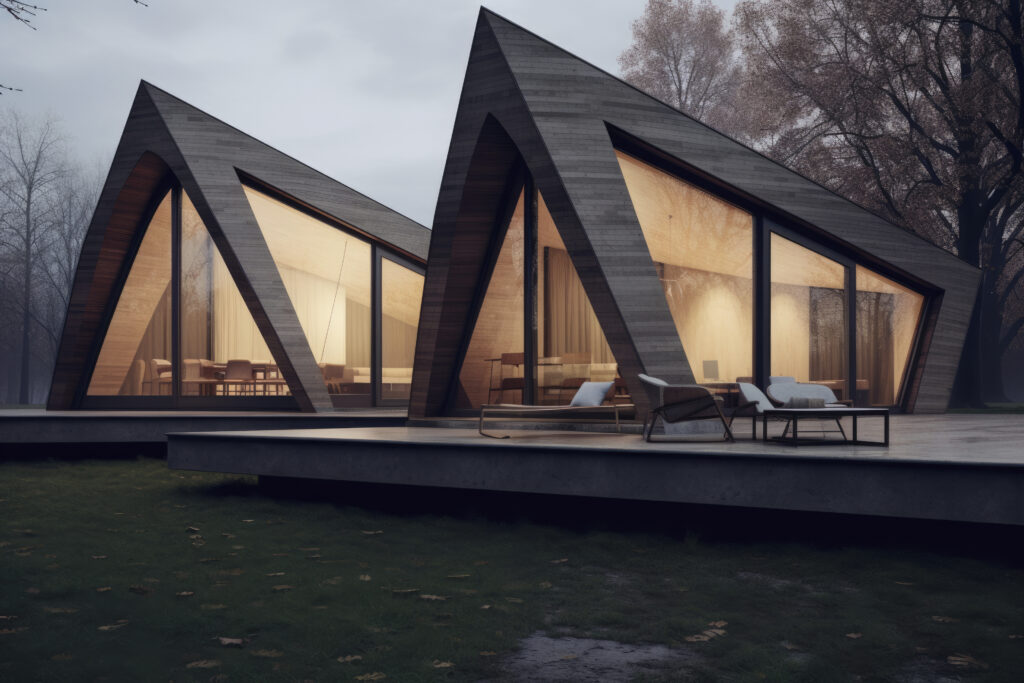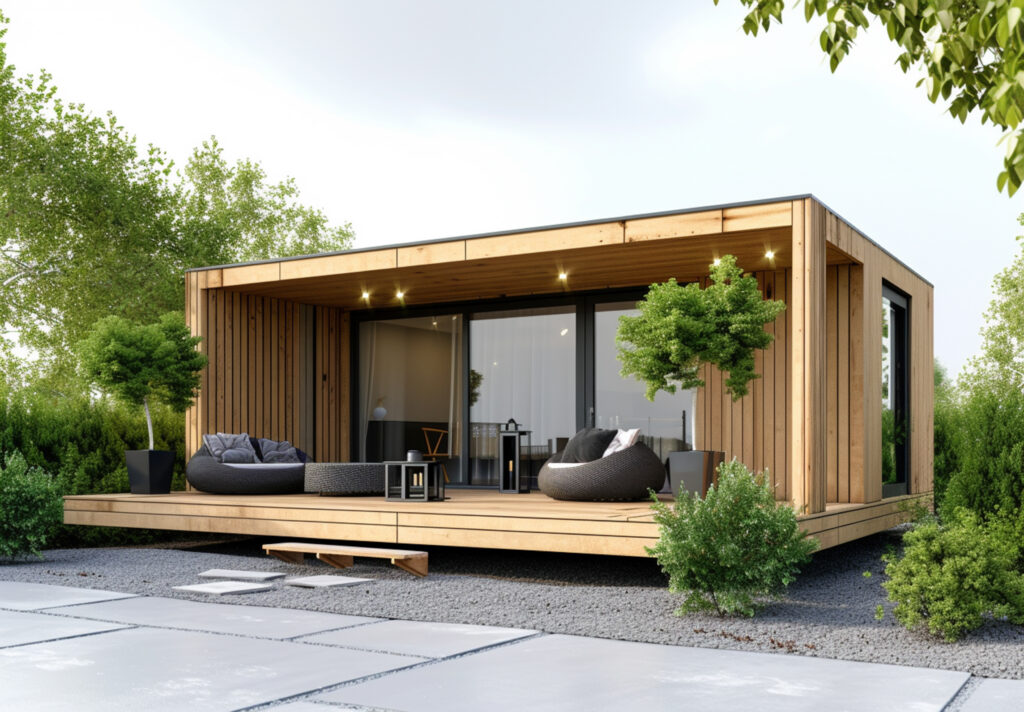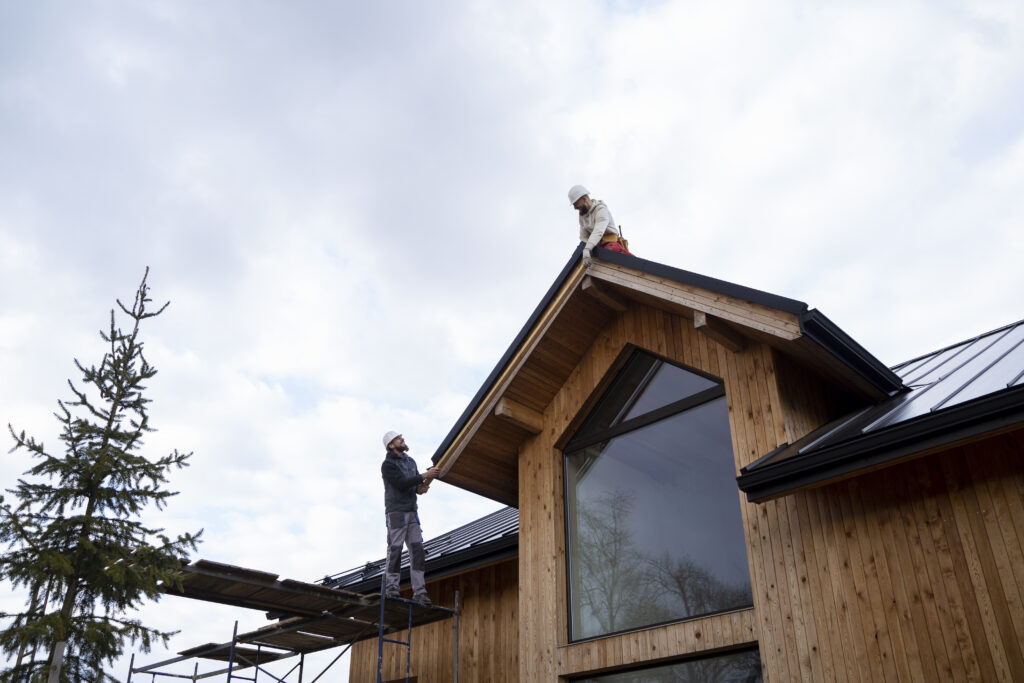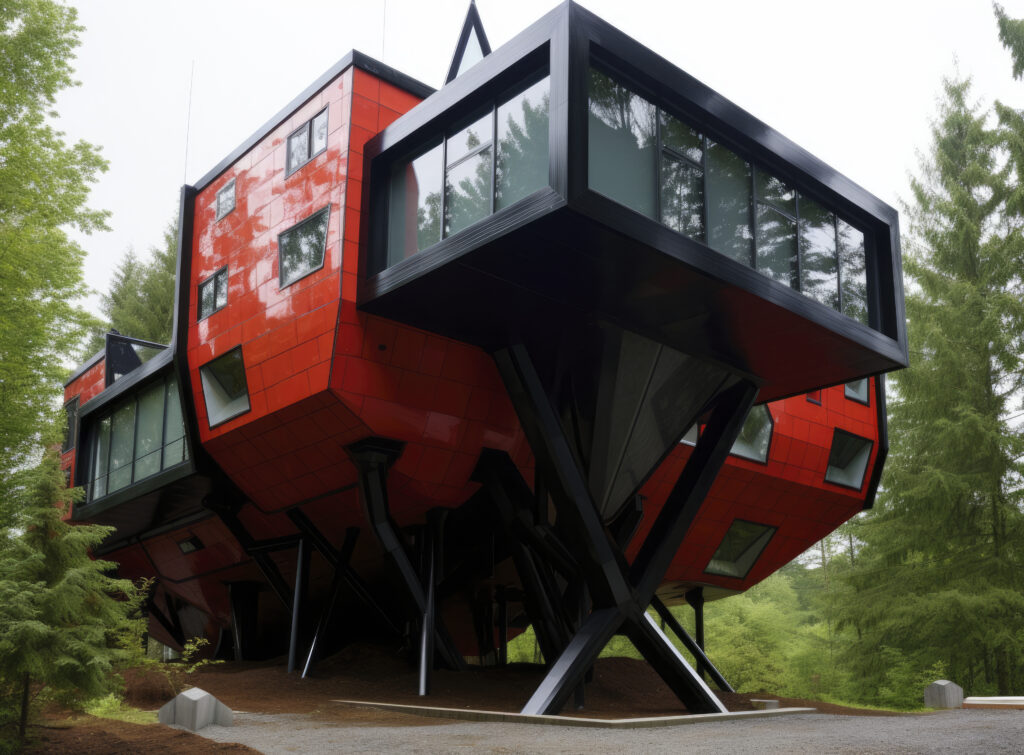All modular homes are prefab homes, but not all prefab homes are modular homes. Confusing? Continue reading and in the end you’ll agree with me. Because we are here to answer your question on “what is the difference between prefab and modular homes”
To choose between the two, you should know them well. Many browse through all the pictures of prefab homes and mistake them to be modular homes. Clients often ask me the common question “are prefab homes the same as modular homes” and that is when I decided to clear the difference in this article.
Before knowing the answer to what is the difference between prefab and modular homes, let’s see the main similarities. The construction process of both houses is constructed in an industrial building, later moved to the final site, and then installed after the land and foundation works. This is where confusion starts.
Let’s talk more beyond this common feature.
A Prefab Home: Experience in Every Module

What is a prefab home? The word prefab comes from the long word prefabricated, which means “made beforehand”. These homes are manufactured in sections in an off-site factory and then transported to the site and installed to form a complete home.
As mentioned before, all modular homes are prefab homes because any home that is mainly constructed in a factory and then installed on-site is considered a prefab. There are many types of prefab homes including modular homes, panelized homes and manufactured homes. The techniques can be used with materials like steel, concrete, or timber.
Prefabrication has been around for many years now, and building methods and technological improvements are making it popular for many who look to own houses.
Modular Homes: Modern Spaces for Modern Families

Again, as mentioned above, not all prefab homes are modular homes because they are a type of prefab home. They are always prefabricated because they are made up of pre-assembled pieces or ‘modules’ that go together like building blocks.
Each module contains one or more rooms, constructed almost entirely in a factory. In many cases, wiring and plumbing are pre-installed. Then these are transported to the slots and installed on the foundation. Simply, it is built to about 80% to 90% completion in a factory.
These homes represent a more advanced, contemporary evolution of traditional site-built homes regarding design flexibility and building codes.
What is the Difference Between Prefab and Modular Homes?
Are modular and prefab homes the same? Let’s see them in detail.

Building Process
Prefab homes are like puzzle pieces built in a factory, then fit together on-site. It’s a bit different with modular homes, though – they arrive as whole modules, already fitted with everything from plumbing to wiring, ready to be assembled on a solid foundation. As modular homes align more to traditional site-built homes, they must follow the same state and local building codes as site-built homes. By following these standards, modular homes often look better than traditional buildings in terms of strength and durability.
Layout Flexibility
Prefab homes have lots of room for creativity! With a variety of layouts and customization options, homeowners can mix and match to create a space that’s uniquely theirs. Modular homes, however, are a bit more like a well-organized home. Each module comes pre-sized, so there’s less flaxibility for layout changes or exterior details. But don’t worry—many modular home builders love to get creative too, working with homeowners to add personal touches and fit the home perfectly into local styles.
Cost Efficiency
It’s true that prefab homes are time and cost effective. Since most of the work is done off-site, they zip through construction, cutting down on labor costs and avoiding the delays that come with bad weather.
Modular homes are also efficient, but their speed can vary depending on the complexity of the modules and the amount of site preparation required. Both prefab and modular homes tend to be easier on the wallet compared to traditional site-built homes due material savings and less construction waste.
Building Standards
They are like the rules of home-building, telling us where and how we can build. Modular homes are made by the same local building codes as traditional site-built homes, ensuring they’re safe, sturdy, and ready for their new home. But homeowners, don’t forget to check if your design fits within the local zoning rules too! These guidelines decide what you can and can’t do with your space, like whether your home can be as big as you want or if it needs to blend in with the neighborhood’s style.
Prefab homes, depending on the type, may need to meet different standards. Manufactured homes follow federal HUD codes, while other prefab types like panelized homes follow local building codes.
Environmental Impact
Modular homes generally offer greater energy efficiency and long-term sustainability, as they can be highly customized to meet green building standards.
Prefab homes, especially panelized homes, are also sustainable and energy-efficient but may require more effort in customization to reach the same level of efficiency as modular homes. However, both options are significantly more sustainable and energy-efficient than traditional site-built homes.
Which One Should You Choose?

When deciding between prefab and modular homes, there are several factors to weigh, from budget and timeline to location and personal preferences.
- Budget
Before choosing between a prefab home and modular home, just look at your budget. It will give your sign on how much initial cost and long-term investment you should make. This will help you choose the option that fits your financial situation. Prefab homes generally offer a more affordable upfront cost, while modular homes can cost a bit more due to their customizable features and higher-end materials but offer a better resale value.
- Time
How quickly do you want your house? If you really need it faster, choose prefab homes, especially panelized homes, as they have shorter construction timelines since they’re built off-site and then assembled on-site. But if you are fine with your home taking a bit more time, you can choose modular homes as they take slightly longer due to the greater level of on-site assembly required.
- Location
Prefab homes are great for areas where building codes and site preparation are more flexible. Manufactured homes, in particular, may be more suited for rural or less-regulated areas. But modular homes adhere to the same building codes as traditional homes and are perfect for suburban or urban settings.
- Design Preferences
Prefab homes are more about standard designs but less customization options. On the other side, modular homes offer more design versatility, allowing for greater customization. If you’re looking for a basic, functional home with a quicker build, prefab might be your best option but if you have a specific need of your home, modular homes provide more freedom to adapt layouts and exterior styles.
Summary of Prefab and Modular Homes
What is the difference between prefab and modular homes? Now I’m sure you are clear about it. Prefab homes are typically more budget-friendly, quicker to build, and simpler in design, while modular homes offer greater customization, durability, and long-term value.
Choosing between a prefab and a modular home ultimately depends on your specific needs. Assess your budget, design preferences, location, and future plans to make the decision that suits you best.
Looking to make your dream home a reality? Contact Capsule Castle today and let us help you build your perfect prefab home—quick, affordable, and hassle-free! Reach out now!





